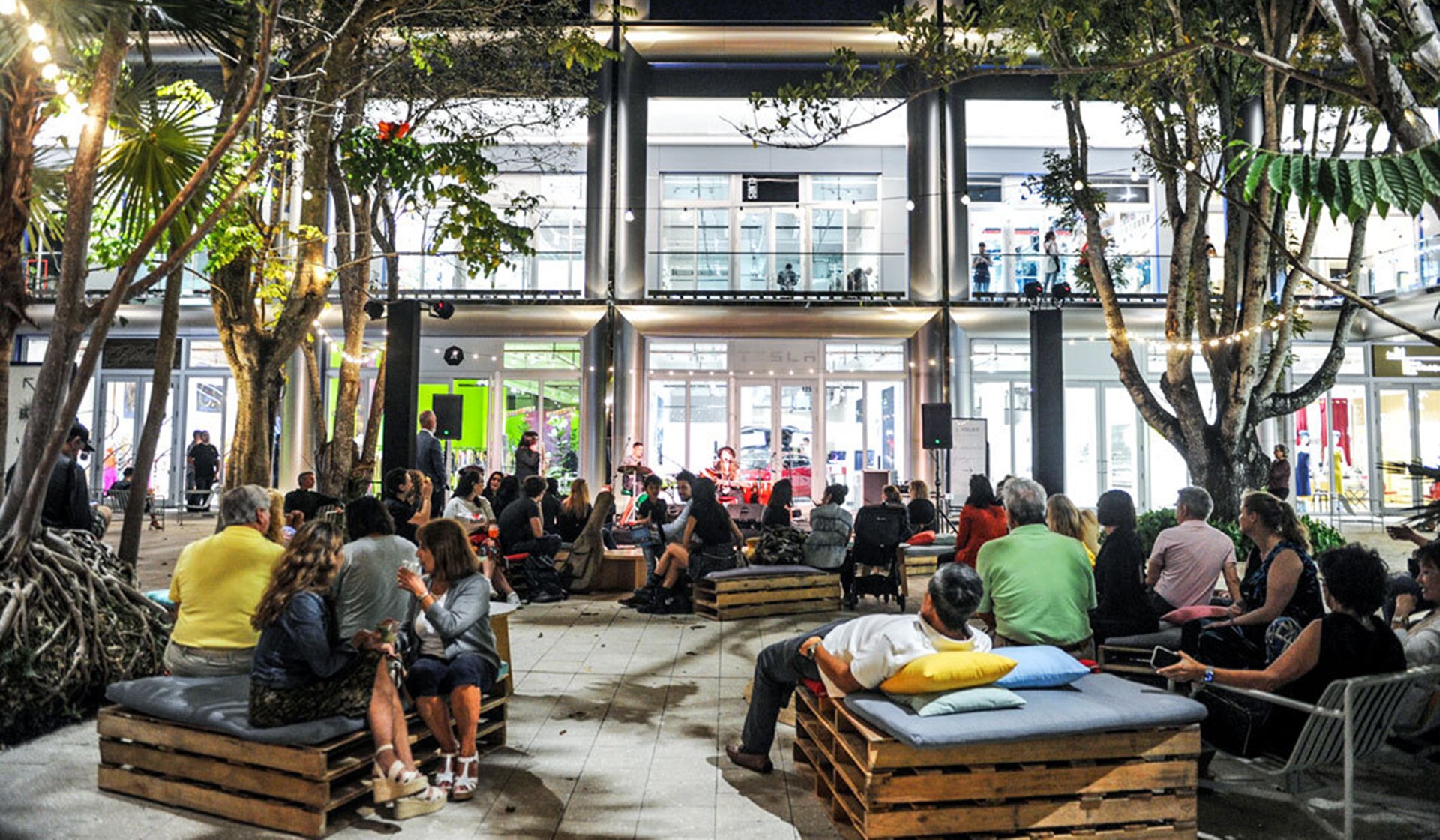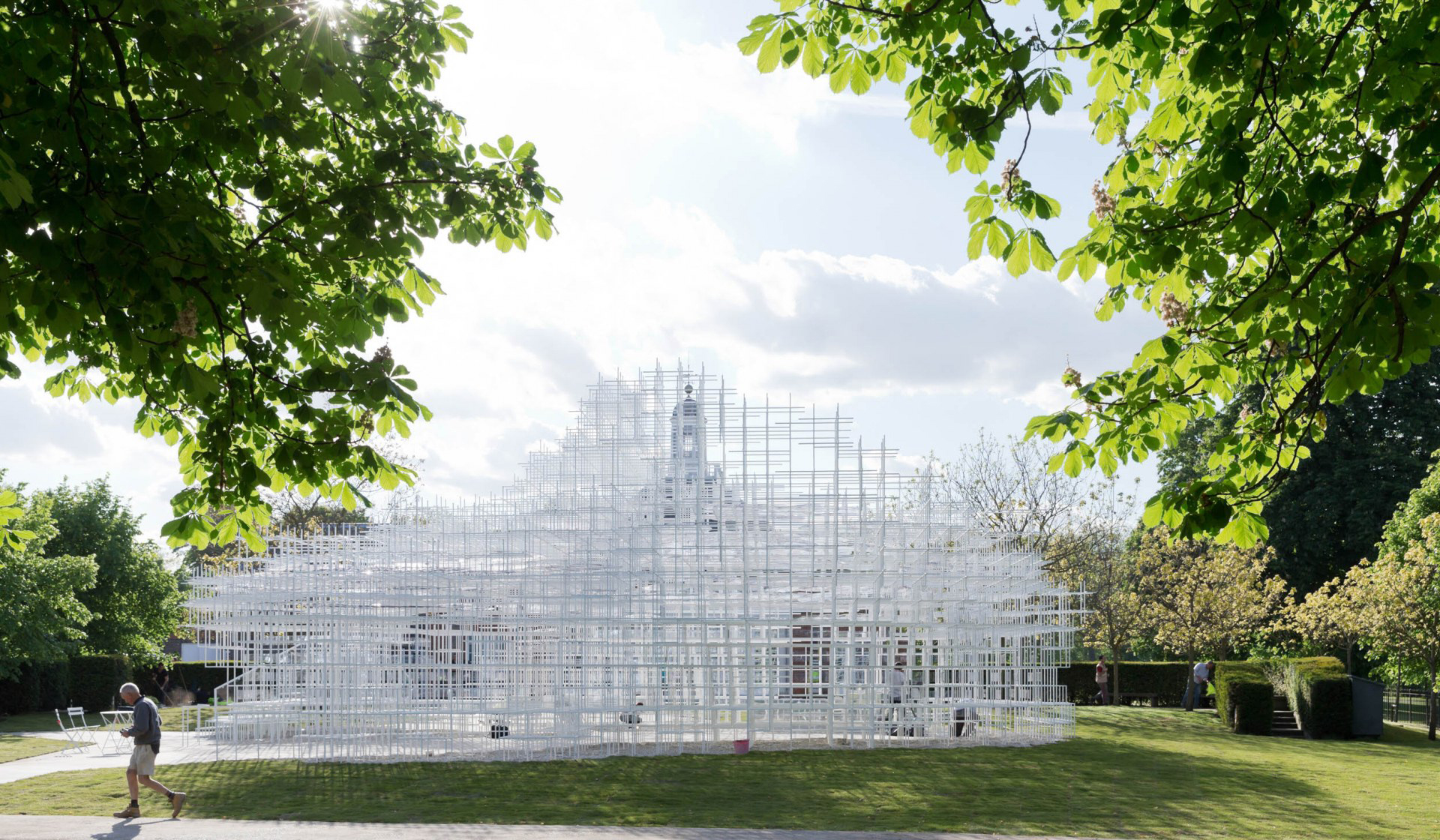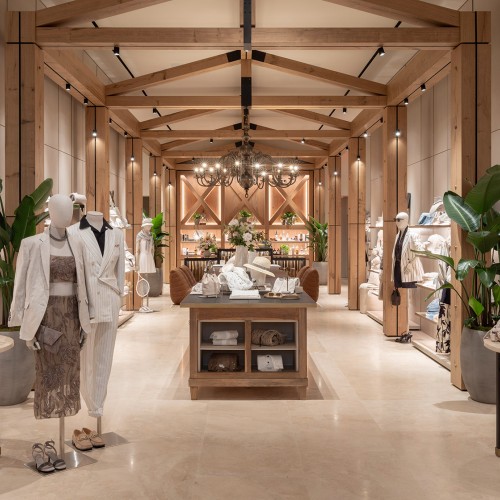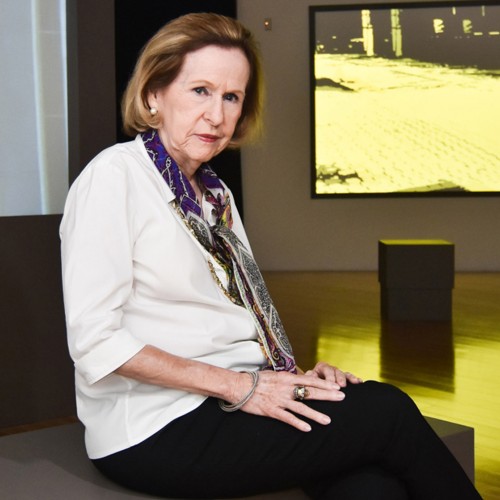Two very different architectural concepts frame the northern and southern open-air plazas that anchor the Paseo Ponti, the pedestrian street at the center of the Miami Design District. The striking clear blue glass facade at Palm Court designed by Sou Fujimoto contrasts with Johnston Marklee’s metal facade frames in Paradise Plaza. The two mediums creating a yin and yang of nature and urbanism, the balance of which is a core tenant of the Design District neighborhood.
Born on the small Japanese island Hokkaido, Sou Fujimoto was constantly inspired by the integration of light with nature. Graduating from the University of Tokyo with a degree in architecture; Sou was propelled into the spotlight by winning the most sought-after international commissions, including designing the coveted Serpentine Gallery Pavilion in 2013 in London titled Cloud Pavilion.
For his first-ever commission in the United States, Sou was invited to concept and create Palm Court’s facade. His design utilized clear blue glass alluding to Miami’s effervescent Caribbean waters that surround the futuristic city. The structure allows for guests to enjoy the sea-breeze while being sheltered from sun and rain while traversing between stores and eateries.
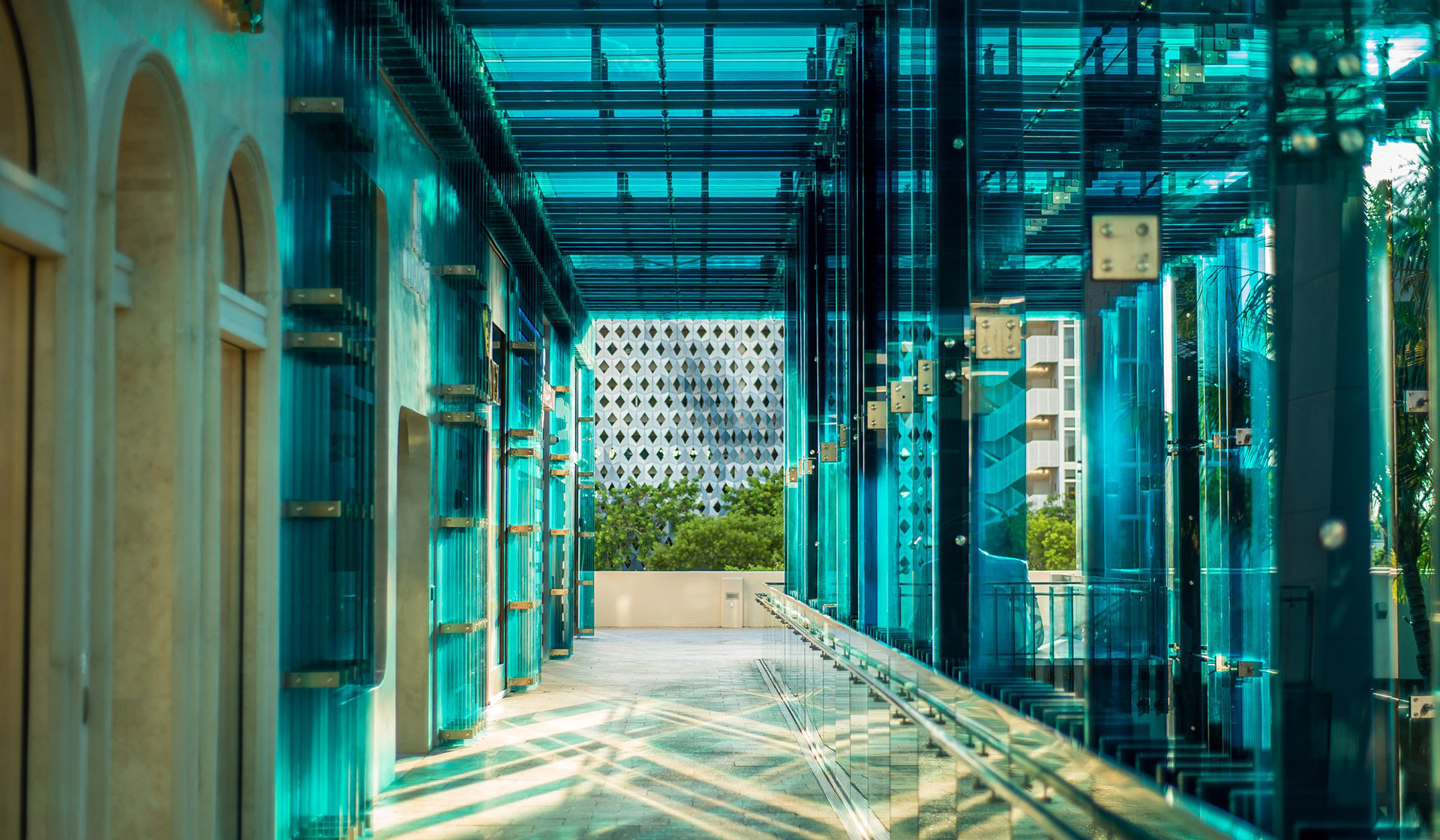
The aquamarine light strongly contrasts with Johnston Marklee & Associate's facade arcade which forms a metal frame around the buildings at the opposite end of the Paseo in Paradise Plaza. Johston Marklee’s design approach explores soaring verticality and scale. Co-founded in 1998 by Mark Lee, Chinese American architect - now the Chair of The Department of Architecture at University Graduate School of Design of Harvard - and Sharon Johnston, famed American architect and architecture critic. Together, their firm has grown to be recognized as a pioneer of modern architecture.
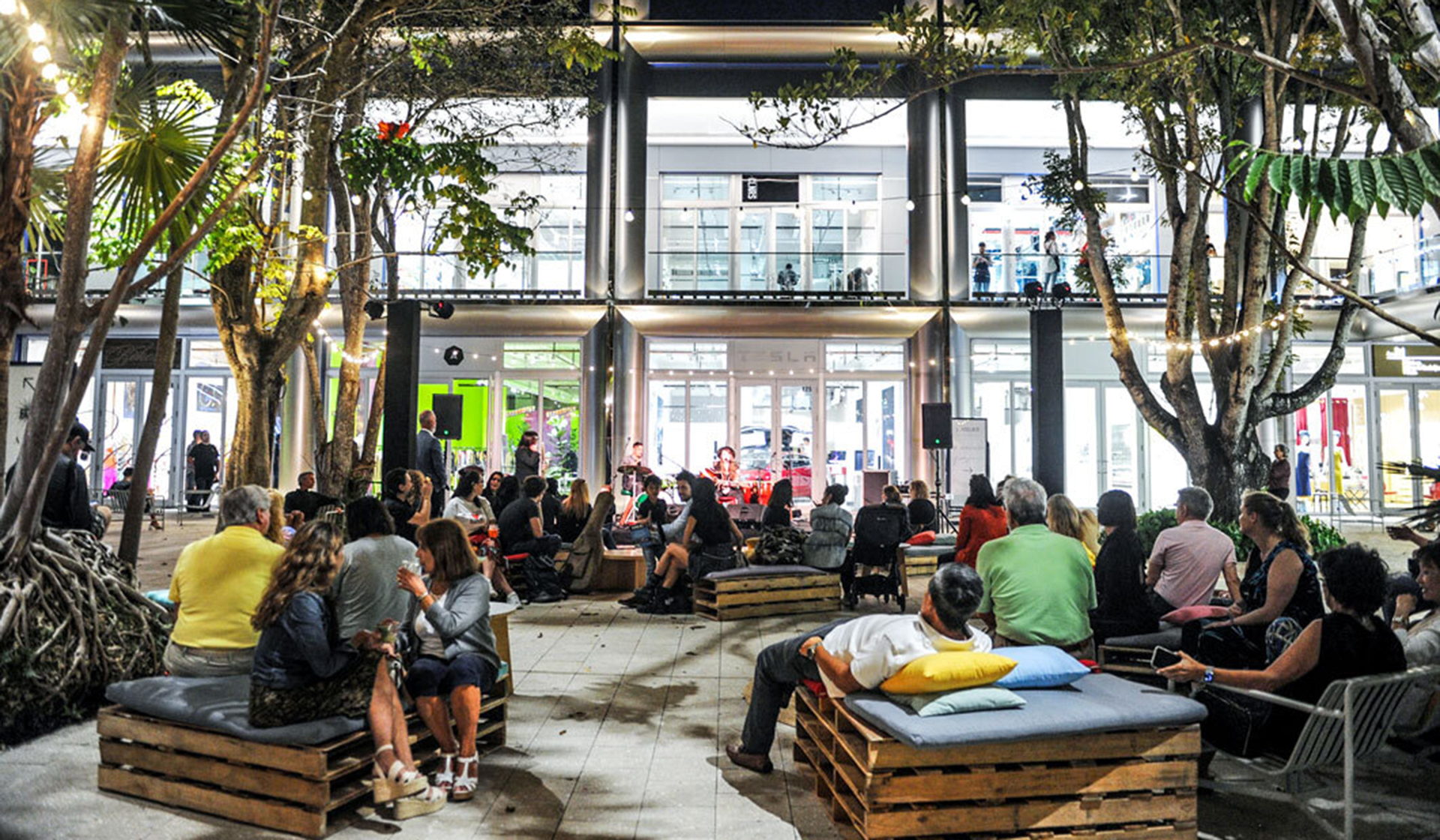
The Paradise Plaza façade is defined by a structural frame of curved stainless-steel cladding of reflective panels. The surfaces designed to amplify natural light, can at first feel simplistic until the eye moves from the ground level to the open-air arcade of the second level, and extends up to reveal a parapet that frames the sky.
The metal is a clear contrast to Fujimoto’s translucent and magical blue glass. When one compares the two designs, it is easy to see how they contrast and pull with each other through the use of colors, mediums, and guest experience. Despite their differences, each structure thoughtfully considers and engagers the natural elements, thus ultimately complementing each other, continuing to elevate the guest's experience in the Miami Design District.

